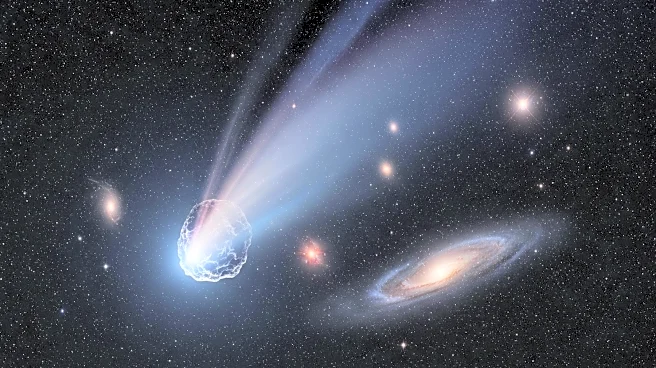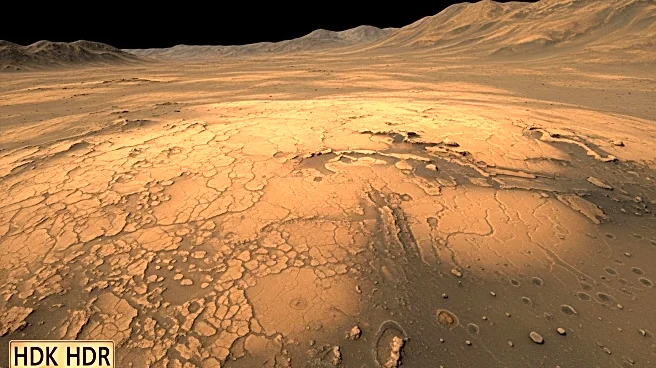What's Happening?
Planetary scientists have discovered a seasonal ozone layer on Mars, particularly within its polar vortex, which is significantly colder than the surrounding atmosphere. This discovery was made using data from the ExoMars Trace Gas Orbiter and Mars Reconnaissance Orbiter. The extreme cold within the vortex leads to the accumulation of ozone, as water vapor, which typically destroys ozone, freezes out. This finding provides new insights into the atmospheric chemistry of Mars and its evolution, suggesting that Mars may have once had a protective ozone layer similar to Earth's.
Why It's Important?
The discovery of a seasonal ozone layer on Mars is crucial for understanding the planet's atmospheric history and its potential to support life. Ozone plays a significant role in atmospheric chemistry, and its presence indicates past conditions that might have been more conducive to life. This research enhances our understanding of Mars' climate and atmospheric processes, which is essential for future exploration and potential colonization efforts. It also provides a comparative model for studying atmospheric phenomena on Earth and other planets.
Beyond the Headlines
The study of Mars' ozone layer could have implications for understanding climate change and atmospheric dynamics on Earth. By comparing the atmospheric processes on Mars and Earth, scientists can gain insights into the effects of polar vortices and ozone depletion. This research also highlights the importance of international collaboration in space exploration, as data from multiple missions and agencies were used to achieve these findings.










